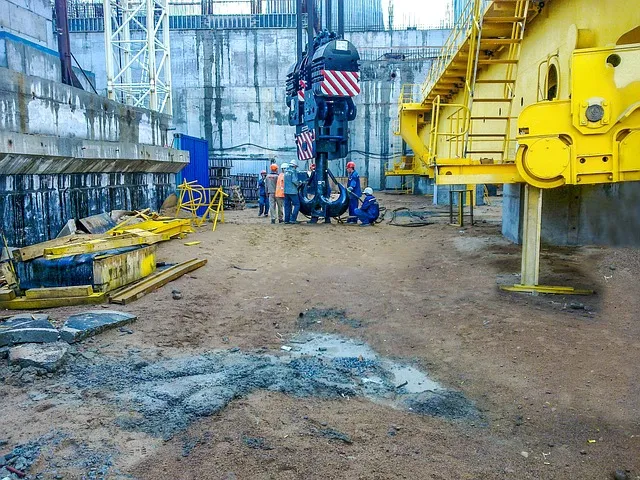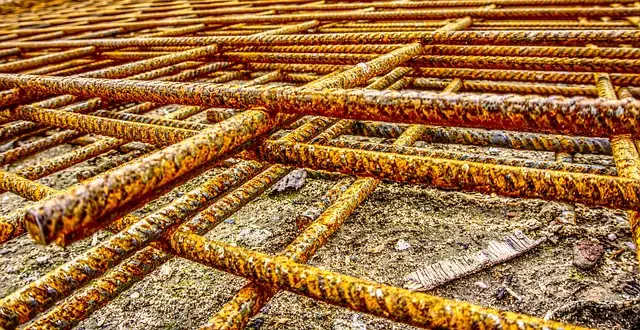Residential foundation repair is crucial for maintaining a home’s structural integrity and value. Common issues like cracks, uneven floors, and gaps around doorframes are caused by shifting soil, settlement, or poor construction. Early detection through regular inspections prevents minor problems from becoming costly repairs. Affordable services address common foundation issues, ensuring safety and long-term property value. Innovative non-invasive methods like underpinning and hydraulic jacking offer cost-effective solutions. Selecting experienced professionals specializing in affordable restoration techniques ensures a smoother repair process aligned with your budget.
“Discovering affordable foundation restoration solutions can be a game-changer for homeowners facing structural challenges. This comprehensive guide delves into the heart of residential foundation repair, equipping you with knowledge to identify signs of damage and understand common causes. From non-invasive repair methods to choosing the right company, we explore cost-effective strategies to stabilize your home’s foundation. By understanding the basics and recognizing early indicators, you can take proactive steps towards a solid and secure future for your residence.”
Understanding Residential Foundation Repair: The Basics

Residential foundation repair is a crucial aspect of maintaining a home’s structural integrity and value. It involves addressing various issues that can compromise the stability of a building’s foundation, which acts as the base support system. Common problems include cracks in the foundation walls or floor, uneven floors, sticking doors or windows, and visible gaps around doorframes. These issues often arise due to shifting soil, settlement, or poor initial construction.
Understanding these basic concepts is essential for homeowners when considering residential foundation repair. The process typically includes inspection, assessment, and implementation of solutions like underpinning, piercing and grouting, or more advanced techniques like helical pile installation. Early detection of problems can prevent minor issues from escalating into costly repairs, ensuring the longevity and stability of a home’s structure.
Identifying Signs of Foundation Damage in Your Home

Damaged foundations can often go unnoticed, hidden beneath the surface of your home. However, it’s crucial to be aware of potential signs indicating foundation issues, as early detection is key for effective residential foundation repair. Look out for cracks in walls or floors, which may be a result of shifting earth and could indicate structural damage. Unlevel or uneven floors can also point towards foundation problems; check for gaps between doors and frames, or windows that stick or don’t close properly. Water stains or moisture buildup on walls, ceilings, or basement areas are another red flag, as water intrusion often signals a compromised foundation.
Regular inspections, especially in regions prone to extreme weather conditions, can help homeowners catch foundation damage early. If you notice any of these signs, it’s advisable to consult with a professional about potential residential foundation repair options. Prompt action will not only ensure the structural integrity of your home but also prevent further, costlier damage down the line.
Benefits of Affordable Foundation Restoration Services

Affordable foundation restoration services offer a range of benefits for homeowners, particularly those concerned about the structural integrity and longevity of their properties. One of the primary advantages is cost-effectiveness; these services provide an affordable solution to common foundation issues, allowing property owners to make necessary repairs without breaking the bank. This accessibility is especially valuable in residential areas where many homes may be similar in age and construction, thus sharing comparable foundation problems.
Moreover, opting for affordable restoration can prevent more significant and costly damages from occurring. Foundation cracks, settlement issues, and other structural problems left unattended can lead to further complications, affecting the entire structure. Promptly addressing these issues through restoration services ensures the stability of the building, protecting homeowners from potential safety hazards and preserving the overall value of their properties in the long run, thereby offering both financial and structural peace of mind.
Common Causes of Foundation Issues in Homes

Foundation issues are a common problem for many homeowners, often leading to costly repairs. Several factors contribute to the deterioration of residential foundation structures over time. One primary cause is soil conditions; expansive clay soils, for instance, can swell and contract with moisture changes, causing cracks in foundations. Another significant factor is poor initial construction, including inadequate drainage systems or improper grading, which can lead to water accumulation around the foundation, resulting in erosion and damage.
Old age and environmental factors also play a substantial role. As homes age, structural elements may weaken, especially if not maintained properly. Extreme weather conditions, such as heavy rainfall, strong winds, or seismic activities, can exert significant pressure on foundations, leading to cracks and misalignments. Additionally, tree roots infiltrating the soil around the foundation can cause heaving and shifting, resulting in visible damage. Identifying these issues early through regular inspections is crucial for effective and affordable residential foundation repair solutions.
Non-Invasive Methods for Foundation Repair

When it comes to affordable foundation restoration, non-invasive methods have gained popularity for their cost-effectiveness and minimal disruption to homes. One such method involves the use of underpinning techniques, where support is added to the existing foundation from below, addressing any settlement issues without extensive excavation or demolition. This process is particularly useful for residential foundation repair, as it allows homeowners to stabilize their structures while preserving the aesthetics and value of their properties.
Another innovative approach is the implementation of hydraulic jacking, which utilizes pressurized fluid to lift and stabilize sinking or leaning foundations. Unlike traditional methods that might require extensive digging, hydraulic jacking is a less invasive option that can be performed from above ground level. This not only reduces the cost of labor but also minimizes the risk of damage to nearby structures and utilities, making it an ideal solution for those seeking budget-friendly residential foundation repair options.
Choosing the Right Foundation Restoration Company

When considering residential foundation repair, selecting the appropriate company is a pivotal step in ensuring your home’s structural integrity and long-term stability. It’s crucial to look for professionals who not only have extensive experience but also a proven track record of successful projects. Researching local companies, reading customer reviews, and comparing services are essential steps in this process.
Focus on finding experts specializing in affordable foundation restoration techniques. These professionals should be adept at assessing the unique needs of your property and offering tailored solutions that align with your budget. Additionally, they must employ safe, effective methods to minimize disruption to your living space and surrounding environment, making the repair process smoother and more efficient.
Cost-Effective Solutions for Stabilizing Your Home's Foundation

When it comes to stabilizing your home’s foundation, cost-effective solutions can provide long-lasting results without breaking the bank. Residential foundation repair doesn’t have to be an expensive endeavor. In fact, many effective methods exist to address common foundation issues affordably. One such solution is piering, which involves installing steel piers beneath the foundation to stabilize it from shifting soil. This technique is particularly useful for homes with settling or sinking foundations.
Another cost-friendly approach is underpinning, where concrete slabs are added below the existing foundation to provide additional support. This method is ideal for older homes that may have inadequate original footings. By investing in these affordable solutions, homeowners can prevent more severe and costly foundation problems down the line, ensuring the structural integrity of their residence.
